The French Press is thought to have been invented somewhere in France during the mid 1800’s, but the name of the person is not known for sure. It was first patented in 1931 by a fellow named Attilio Calimani (that name does not sound French). It is also commonly referred to as a “Press Pot” and “Coffee Plunger”. In French, it is called “Cafetiere a Piston”, with cafetiere meaning “coffee maker”, or “pot”.
Why use French Press? Well, it is a standard by which coffee is evaluated because it’s the most pure way of preparing coffee. One has complete control over steep time, steep temperature, quality and size of coffee grind without using paper filters that filter out some of the finer nuances the coffee may have to offer.
Using a coffee plunger correctly may be a little more difficult than it first appears. If the coffee doesn’t taste great, try reviewing the steps below and make changes to your method until it comes out right.
French Press Brewing Preparation
Get the Grind Right. Use of a high quality grinder for French Press is almost as important as it is for espresso preparation. Avoid using blade grinders since they create grind particles of extreme size variance. Instead, use a decent quality burr grinder like the Baratza Maestro. A $40-$50 burr grinder won’t work very well. If you have a high-end espresso grinder available, all the better.
The grind size depends on the fine-ness of the screen in the press-pot. Grinds should be just fine enough not to pass through the screen. A common misconception is to grind too coarse. The mesh screens in the stainless steel French presses we sell are very fine, so we recommend a grind size considerably finer than what you’d see in a can of, say Folgers or other pre-ground large commercial canned coffee. Note that there will always be some sediment left in the bottom of the cup. It’s part of the French Press brewing process. Simply don’t drink the last sip or two.
So the key two grind points are:
- Use a high quality burr grinder, or you probably won’t like the result.
- Use as fine a grind as you can without having grinds pass through the mesh.
How Much Coffee To Use? Try starting with two tablespoons of ground coffee, or 10 grams if you have a digital scale, per 6 ounces of water. If the brew tastes too weak, increase the amount by adding one more tablespoon, or 5 grams. Remember, you’re creating a custom masterpiece in the morning, so getting the right technique might take some experimenting.
Brewing Technique and Steep Times. Here comes the best part. You have total control over the entire brewing process, unlike with a drip brewer.
- Once you’ve perfectly ground the coffee and put the right amount into the pot, pour the correct amount of good quality water you intend to use over the grounds in a circular fashion. Use mineral water if possible. The water must be between 195-205 degrees Fahrenheit as it contacts the grounds.
- Do not let dry islands of coffee grounds form in the middle. If they do, use the back side of a spoon to push the island just under the surface.
- Carefully place the plunger into the pot with the screen against the lid (the knob is pulled all the way up). Do not press the plunger down at this time. The purpose of putting the lid on is to help keep in the heat. This is where our vacuum insulated stainless steel French presses excel. Presses made of glass allow more rapid heat dissipation, which is not necessarily good for brewing.
- After one minute, leave the lid on and gently swirl around the press in a circular motion to create a whirl-pool effect which will suck any floating ground beneath the surface.
- After one to two additional minutes, gently press the plunger down firmly into the pot. This pressing action should take 10-20 seconds (don’t just ram it down quickly).
- It is ready to pour into your favorite mug and drink.
Note that our method uses only 2-3 minutes of total steep time. This is because we use as fine of a grind setting as we can without having coffee grounds pass through the mesh. A finer grind allows the more flavorful oils to be extracted into the brew. A coarser grind takes a longer steep time of 4-6 minutes to extract these oils, and you also may wind up extracting some of the more undesirable bitter compounds associated with over extraction. Some of the cheaper presses on the market don’t have very fine screens. If this is the case with yours, then you have no alternative but to grind coarser or upgrade to a better quality press.
What about leaving the coffee in the French Press after brewing is complete? Try and make only as much as you would use in a single serving by simply reducing the amount of coffee that is brewed. If you’re like me, you probably don’t have time in the morning to run through the whole procedure again. For a while there, I was decanting the extra coffee into a thermally insulated cup, but then found that as long as the plunger is pressed firmly to the bottom, the “second cup” of coffee was still much better than the coffee decanted into another cup. The reasoning goes that when the grounds come into contact with water, the water makes contact with every microscopic point on each individual ground. When the grounds are firmly pressed to the bottom the overall surface area (all the points of contact), decreases many of times over, leaving the water very little surface area with which to continue infusion. Using this method, the 2nd cup can easily sit in the thermal, stainless steel press for an additional 10 minutes and still taste great.
Happy Brewing!
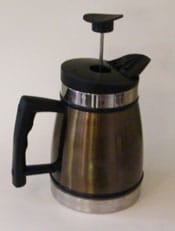
Stainless Steel French Press
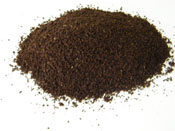
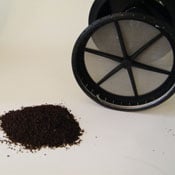

Use 10 grams per 6 oz water
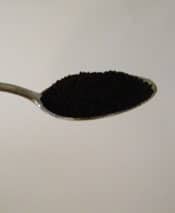
This is exactly 5 grams

Pour water on top of grinds
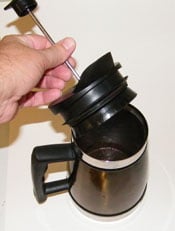
Carefully install piston
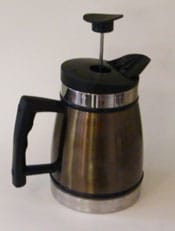
Let it steep per instructions

10-20 second press time
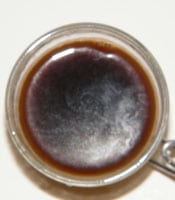
Flavorful coffee oils at the surface
